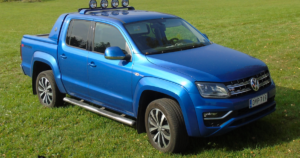In case you hadn’t noticed, it has been raining quite a lot lately up and down the country and there’s no doubt a lot more on the way too. Now you may be thinking that this is ok, as you’d much rather drive in the rain than the snow. However, when you encounter heavy rain and floods on the road this doesn’t mean that driving is any easier as wet driving can prove to be rather difficult and challenging.
So to help you stay as safe as possible when driving in wet conditions, here are some useful tips to help you prepare for the wet weather this winter:
Heavy rain
The first thing you should do before you even consider driving in the rain is to ask yourself whether the journey is really necessary as there’s no point in getting yourself into a sticky situation if you don’t really need to travel. If you decide that the answer to this question is yes, then try and plan ahead, check to see if any floods have been reported and if your route is still accessible. Try to ensure that you have plenty of charge on your phone and that you check everything is working before you set off such as your heater controls, windscreen wipers, your lights and that your tyres have plenty of treads.
When it comes to driving in heavy rain always remember to slow down, reduce your speed and leave even more space between you and the vehicle in front as stopping distances are increased. Keep your eyes on the road ahead and ensure that you’re using your dipped headlights so that you can see the road and so that other drivers can easily see you. While you’re driving, look out for any large or fast-moving vehicles, which could reduce your visibility as they create spray and tune in to your local radio so that you can keep up to date with any road closures, traffic updates and floodings.
One thing you should most definitely keep a lookout for is standing water. Try and avoid this where possible and adjust your speed as driving fast through standing water can be very dangerous. If you drive fast through standing water your tyres could lose contact with the road, resulting in you losing your steering control, also known as aquaplaning. If you do experience this, hold on to the steering wheel and ease off the accelerator until you gain full control of your steering again.
Floods
In cases of severe flooding, you should perhaps think about whether you should be making your journey at all and in relation to puddles, if you drive through these incorrectly, you could end up causing some damage to your car.
As a basic rule, if you’re unsure about how deep a flooded road is, then the best thing that you can do is to turn around and find an alternative route to your destination. However, if the puddle looks shallow enough that you could drive through it, be careful of any objects that could potentially cause some damage to your car’s wheels, tyres or suspension. When driving through a large puddle or a flood, drive slowly and bear in mind that once you have started, make sure that you keep going. If you’re driving a manual car, try and keep the revs high, driving with the clutch not fully engaged at all times as you’re travelling through the water, as this will help to make sure that you don’t get bogged down.
If you do happen to get stuck, the safest thing to do is to remain in your car and call for help. Once you’re out of the water, dry your brakes. The best way that you can do this is by applying the brake pedal as your driving along for a few seconds after you have checked that nothing is following you too close of course.
So, whatever you do, slow and steady is the way forward. In order to arrive safely at your destination, take it slow and concentrate. Other drivers may not be as careful as you so be cautious as to what they might do.





















































